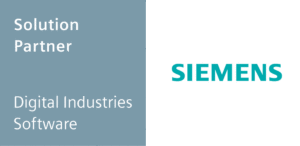Software Defined Infrastructure
Overview
The need to make infrastructure more portable and distributed in an effective, standardised, and repeatable way requires a new approach to managing infrastructure.
Cypherpath SDI OS
Cypherpath SDI OS is an enterprise OS that integrates compute, virtualisation, networking, and storage into a scale-out stack for deploying private, hybrid and public clouds on bare metal hardware. Cypherpath fundamentally simplifies clouds by running and managing them as self-contained files.
True Hyper-Convergence
Cypherpath SDI OS delivers true hyper-convergence by integrating networking with compute and storage at the OS level. Run each cloud and all of its dependencies as self-contained files on any commodity hardware.
Seamless Cloud
Access Cypherpath SDI OS on private or managed public bare metal for seamless and consistent cloud operations. Create, deploy and run clouds on or off premise anytime, anywhere.
Clouds as Files
Each cloud is executed as its own file and is treated just like a document so it can be edited, copied, shared, and backed up. Eliminate cloud infrastructure discrepancies and reconfigs.
Single Click Operations
Manage and administrate cloud operations with a single click. Drive IT operations with point and click simplicity. Eliminate special skills while increasing efficiency and performance.

Cypherpath Overview
Cypherpath SDI OS can be installed to any bare metal x86 server. Cypherpath then leverages true hyperconvergence to natively integrate compute, networking, virtualisation, and storage at the OS level providing a platform capable of running clouds as a file (CaaF). The cloud infrastructure is isolated and abstracted away from the underlying physical hardware. This enables multiple cloud environments to be continuously deployed.
Cloud as a File (CaaF) treats each cloud environment as a file. Each CaaF is 100% software-defined. A CaaF contains the applications, environment software, software-defined networking specifics, and the configuration specifics for each cloud environment. CaaF enables each cloud environment to be deployed on demand, edited, saved, copied, cloned, shared, ported, backed up, and secured.
Key Benefits
Resource Optimisation
Consolidates infrastructure to a smaller footprint and increases efficiency.
Agility and Portability
Clouds are securely stored as isolated files. Instantly create, deploy, and run any cloud infrastructure.
Hardware Abstraction
Install to x86 based servers. Abstract away the underlying configurations, components, and hardware.
Scalability
Scale clouds as needed, on site or in the cloud, and without constraints.
Security
Clouds are isolated, limiting the effects of misconfigurations and attack surfaces.
Cloud as a File (CaaF)
100% software-defined and self-contained clouds as files. Control when and where your clouds run.

Cypherpath replaces the need to purchase, manage, and deploy separate compute, network, and storage devices. Cypherpath also eliminates the need for highly specialised skills by leveraging its CaaF architecture to fundamentally simplify cloud creation and deployment.
Use Cases
Private, Hybrid & Public Clouds
The need to make infrastructure more portable and distributed in an effective, standardised, and repeatable way requires a new approach to managing infrastructure.
Cyber Range Sandbox
Cyber-Ranges are complex lab infrastructures comprised of multi-vendor hardware and software components and tools. This diversity and complexity creates a steep learning curve for cyber-range personnel to become productive and can impede the cyber-range’s effectiveness.
Development & Test Labs
Create virtual replicas of your production environment to use for development, testing, demos, training and support.

